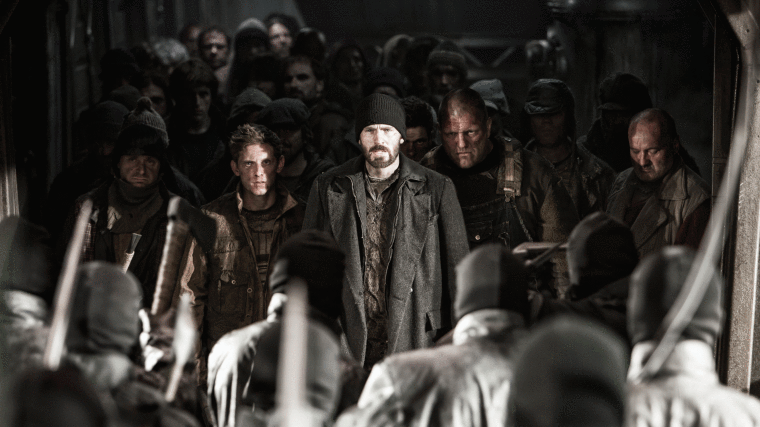Finally, American audiences have reached the end of their wait for the highly anticipated (in certain circles) and sure-to-be cult classic Snowpiercer. An international affair from the ground up, Snowpiercer is based on a French graphic novel. It’s directed by a South Korean film auteur, Bong Joon-ho (Mother), and stars several American favorites: Chris Evans (Captain America: The Winter Soldier), Tilda Swinton (Only Lovers Left Alive) and Ed Harris (Pain & Gain).
The story is a deceptively simple one: In a post-apocalyptic future ice age, all of humanity lives on a perpetually running train. The poor people live in the back and the rich in the front, so it’s time for some class revolution.
Make no mistake: This film is strange. Its oddness stems from its refusal to follow the blueprints of its genre to the dot. It sets itself up as one type of film but manages to weave in and out of others while never fully abandoning its status as a post-apocalyptic sci-fi action movie.

Snowpiercer
Joon-ho is known for his tendency to subvert expected tropes and above all to keep his audiences off-kilter, unsure how to feel or think about the bizarre tonal shifts his films often employ. Snowpiercer is no exception. It veers from gritty modern sci-fi blockbuster to ultra-violent black humor to absurd comedy, to name a few, all without warning. For some, the shifts might prove too much.
The film opens among the squalor of the lower classes, home to Curtis (Evans), our de facto protagonist, and his essentially nameless cadre of companions. It’s all pretty conventional from the get-go, with familiar character types and story beats: The villains are relentlessly evil, our heroes are downtrodden and willing to fight back, etc. Yet once the team begins its plunge through car after car on this train, things take a sharp turn — or many sharp turns, actually — plowing through genre trope after genre trope.
Evans’ stock-in-trade action protagonist is played with a commendable world-weariness and a savagery appropriate for his low-class role, and Swinton’s eccentric-to-say-the-least character remains a source of cringe-worthy hilarity throughout, yet the film doesn’t exactly excel in the character category. At times, it (likely intentionally) echoes early arcade video games, with its rigid structure — enter the next section, fight the enemies inside and move on to the final boss, with barely any reason why.
That’s not to say that the Game of Thrones-worthy atmosphere of “kill off characters regardless of narrative importance” fails to keep viewers emotionally engaged during the fights, however. The battles are brutal, almost always ending in the death of at least one somewhat-significant character and refusing to conform to general film narration techniques. These are fights unlike most in the world film, and their excellent direction keep them unique and tense despite occasional bloatedness.
The film can be a bit heavy-handed in its themes of climate change and its attack on rampant capitalism, but given the rarity of action movies addressing any sort of greater social theme, they’re welcome here. The few CGI shots of the train propelling itself across a bleak and frozen Earth are simultaneously intriguing, and yet they obviously pale in comparison to the technical wizardry in most big-budget monstrosities. These instances show that even when Snowpiercer seems to take wrong steps, it’s still interesting; it’s still evidence of a director willing to take risks to make a film that’s a product of his vision.
Snowpiercer succeeds by keeping its viewers tilting back and forth, hurtling along the tracks, unsure of what’s on the other end of the tunnel. It’s not for everyone — don’t go into the film hoping for a usual grim summer blockbuster with explosions. Don’t go expecting a slow-moving meditation on technology and class, either. Expect something with a bit of both and a whole lot of weirdness, and you’ll likely enjoy it.
Here’s hoping Snowpiercer does well enough for Hollywood to take the hint: Weird is good.




